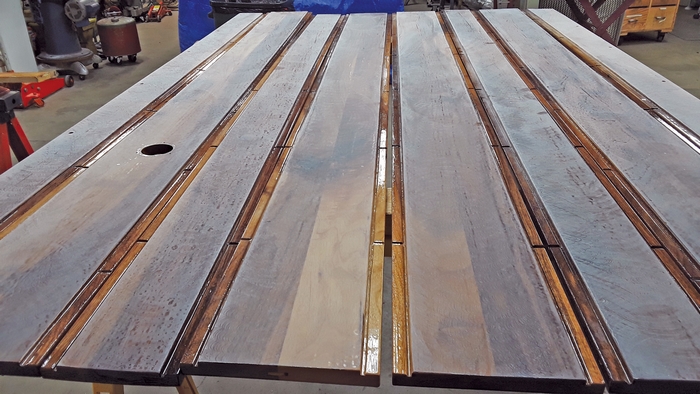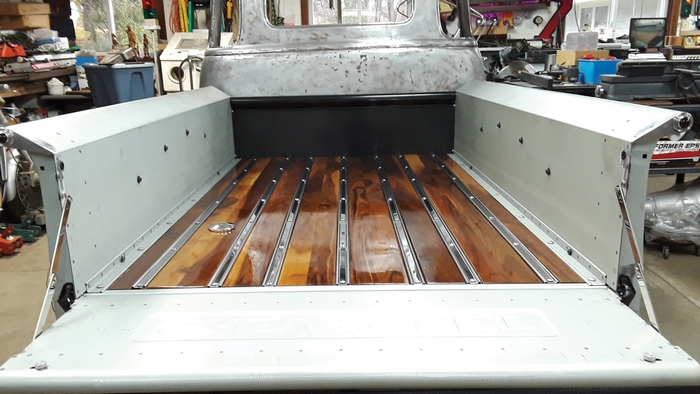
ABOVE: The completed truck bed in the remodeled 1953 Chevrolet 3100 pickup truck.
By Kerry Barnard
I purchased my 1953 Chevrolet 3100 pickup truck in 1975 from my best friend’s older brother. Years earlier, it had been the first vehicle I’d ever driven. For the next 29 years, it was stored outside and used sporadically. In 2004, I half-heartedly began restoring this truck and finally got serious about the project when I retired in 2018.
After being exposed to Minnesota weather for many years, most of the truck’s wooden bed was rotten or missing. With a few sections that survived and the help of YouTube, I was able to reproduce the eight wooden boards close to the original ones. I used some black walnut that my dad—a woodworker for many years at a local grandfather clock company—obtained that wasn’t up to their standards. However, the truck’s original design required four of the eight boards to be 7 1/8″ wide but the widest boards I had on hand were only 5″ wide.

I recall my dad always using Elmer’s® white wood glue for joining wood and that if the excess glue wasn’t properly removed before drying it created more work (sanding) and/or affected the final finish. WEST SYSTEM® 105 Resin® and 207 Special Clear Hardener® was the perfect solution. It had the right adhesive properties to hold the wood together and resulted in a clear, hard surface that would show off the grain of the black walnut. A call to Technical Advisor Don Gutzmer at Gougeon Brothers confirmed my choice. He provided tips and much-needed guidance.
I used a dual-action sander with 120-grit sandpaper before applying the first coat of 105/207 to the walnut boards. I applied three coats, leaving 2 ½ to 3 hours between coats. I think the best tip (pun intended) was using a small section of a foam roller to tip the fresh epoxy after rolling it on. It did a great job of leveling the surface.
Before final sanding, I let the epoxy cure for three days. I sanded using 120-, 220- and 320-grit. Then I used a microfiber cloth to wipe off the dust. I followed up with a maroon Scotch Brite® abrasive hand pad, then 600-grit and 800-grit sandpaper. Again, I used a microfiber cloth and alcohol to remove all traces of dust/residue. For the final finish, I used a Spraymax® 2K Clear Coat an ultraviolet-resistant automotive coating.
For my first project of this type and size, I am thrilled with the results. My wooden truck bed turned out so much better than I ever could have expected.





